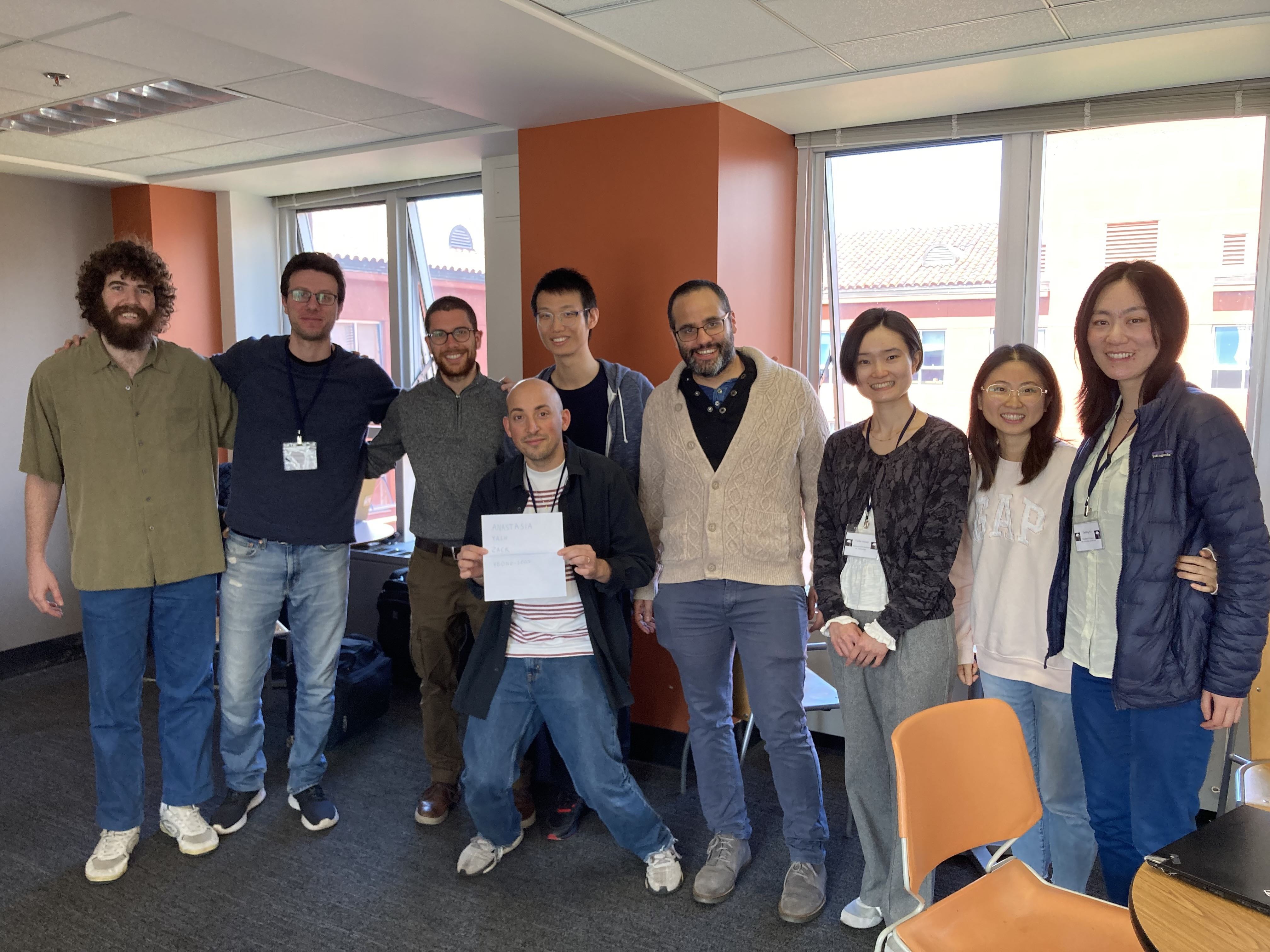This year, the West Coast Conference on Formal Linguistics (WCCFL42) took place at UC Berkeley on April 12—14. MIT was well-represented by the following current and very recently graduated students:
- Yeong-Joon Kim (5th year): Overapplication opacity as a consequence of phonetic faithfulness
- Fulang Chen (PhD, 2023): Generalized composite probing in Mandarin
- Ido Benbaji-Elhadad (5th year): Specific-opaque readings relative to tense and DP-internal quantification over times
- Anastasia Tsilia (3rd year) & Zhuoye Zhao: Why is then incompatible with the present?
- Gurmeet Kaur & Yash Sinha (5th year): Gender asymmetry as a window into the mechanism of mixed concord
- Ido Benbaji-Elhadad (5th year) & Omri Doron (5th year): Relevance as a dynamic constraint
- Yurika Aonuki (2nd year): Minimum-standard predicates as resultatives and measure phrase interpretations
- Zachary Feldcamp (2nd year): Precedence-sensitive A-movement in locative inversion
- Stanislao Zompì (PhD, 2023) & Zhouyi Sun (2nd year): *ABA in Multidimensional Paradigms: A Harmonic Grammar-based account
- Danfeng Wu (PhD, 2022): The absolute and contextual forms of ‘one’ and ‘two’ in Mandarin Chinese
- Magdalena Lohninger & Ioannis Katochoritis (1st year): Between topics and subjects: an A’/A typology of Austronesian pivots
- Itai Bassi (PhD, 2021): Pathological Questions, focus, and unacceptable ellipsis
(Photo credit: Fulang Chen. Missing: Anastasia, Zach, Yash, Yeong-Joon—-as indicated on the piece of paper in the photo.)
